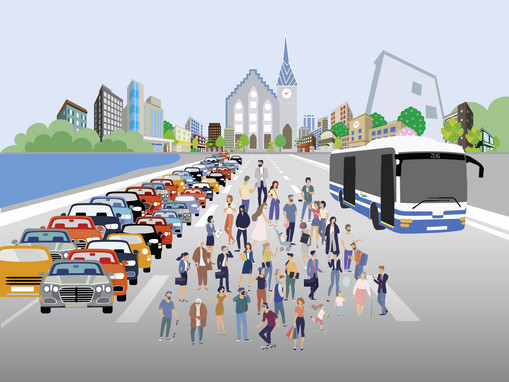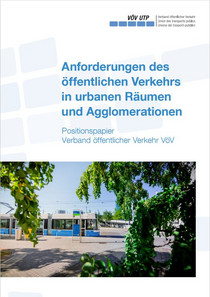This website uses cookies to ensure you get the best experience on our website. By using our website, you agree to our privacy policy and the use of cookies. Learn more.
Space-saving mobility: what is it?
Our society travels by different modes of transport: by car, public transport, bicycle, scooter or on foot. If you compare the space requirements of the individual modes of transport, it quickly becomes clear that public transport and non-motorised transport require significantly less space than private motorised transport.
The reasons for this striking difference are the low occupancy rate of cars (on average 1.1 people per car in Switzerland), the roads that cars need to travel on and the relatively large parking space. The space requirement per car driver is therefore 115 m², whereas people travelling by public transport need around ten times less space. Here, the space requirement is between 7 and 12 m². Many more people are transported in a public transport vehicle (high occupancy rate), which reduces the space requirement per person.

The calculation takes into account both the area occupied by the vehicle in motion and the parking area.
In concrete terms, this means that you need different amounts of space depending on the mode of transport you are travelling with. In urban areas, the population is constantly increasing. However, the space available for driving or walking is not. Urban mobility development therefore requires a certain amount of space-saving mobility such as public transport and non-motorised traffic.

On a normal working day, the ZVB transports an average of 33 passengers per journey on route 604. This corresponds to a motorcade of 30 cars.
Position paper of the VöV
Requirements of public transport in urban areas and agglomerations - Position paper of the Association of Public Transport (VöV)
Download

